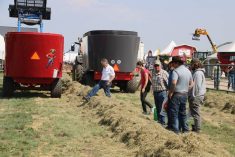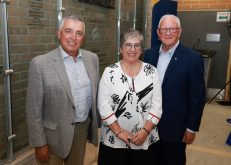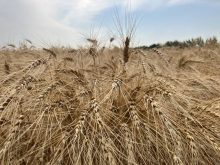SaskPower spent a record $640 million on capital projects last year and plans to spend $8 billion over the next decade to improve its aging infrastructure.
Capital investment in 2010 will be $832 million.
The Farmyard Power Line Relocation Program and Rural Electrical Distribution Program were among the projects introduced last year that will continue.
The programs are small parts of the corporation’s budget, at $2.5 million and $12.5 million respectively, but they are intended to replace old infrastructure and reduce risk in rural Saskatchewan.
Read Also

Supreme Court gives thumbs-up emoji case the thumbs down
Saskatchewan farmer wanted to appeal the court decision that a thumbs-up emoji served as a signature to a grain delivery contract.
SaskPower pays 75 percent of the cost to bury or relocate overhead power lines in farmyards. Several hundred customers are on the waiting list.
The other program will move overhead lines from fields to road allowances. Five pilot projects saw 91 kilometres of power lines rebuilt, 892 poles removed from fields and 24 farms converted to underground service. Much of the company’s existing infrastructure was built in the 1950s, 1960s and 1970s and must be upgraded.
Expanding natural gas generation, servicing a growing customer base and developing green power initiatives such as wind and clean coal all come at significant cost.
A proposed seven percent hike is before the Saskatchewan rate review panel. If approved, it would take effect Aug. 1.
The government has already said it will not take a dividend from SaskPower in 2010, for the second year in a row.
SaskPower serves more than 467,000 customers from three coal-fired power stations, seven hydroelectric stations, five natural gas stations and two wind facilities.
It also buys power from several wind and co-generation facilities and has an agreement to buy wind power from the Red Lily project to be built near Moosomin this year.
The government also announced $1.3 million in funding last week for a Saskatchewan Research Council project to develop cost-effective wind energy storage technology.
The project, which is on land owned by Cowessess First Nation five kilometres southeast of Regina, will capture wind energy at heights of 70 to 90 metres and examine how to store that energy for use when wind speeds are low. Turbines at SaskPower’s existing wind farms are 65 metres high.

















